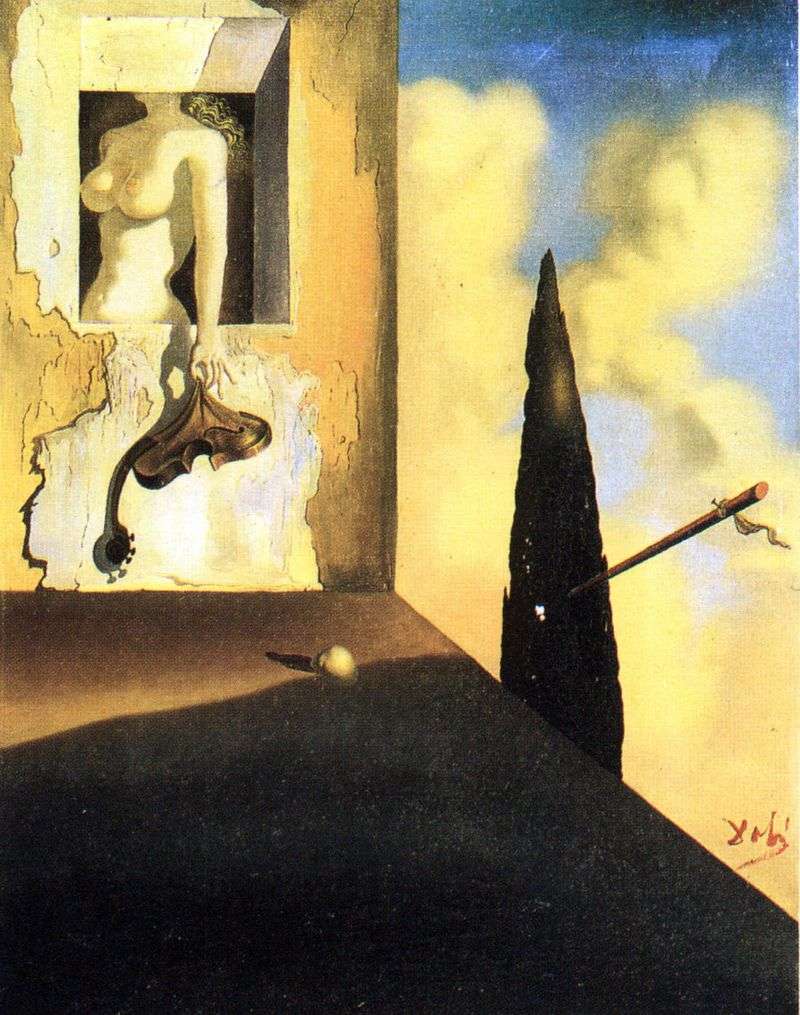
On this canvas in the best traditions of the artist’s favorite paranoid critical method, space and perspective play in charades with the viewer. At first glance the scene of the picture gives the impression of a closed volume, limited by three walls.
One of the walls is decorated with painted clouds and cypress, the other – a massive frame with a picture of a naked woman. The second view brings understanding that we see the site at the level of the second or third floor, which comes out the window, and the woman is standing inside, outside the window. And the cypress and the golden clouds, illuminated by the sun, are not a fresco, but the most that is not a real landscape.
The feeling of two-dimensionality is added to it by a wooden pointer with a protruding nail and a piece of cloth clinging to it: it is located parallel to the plane of the nonexistent “wall”. But the falling shadows and the lighting that creates them, suggest that this plane is only finished with the imagination of the viewer.
The thick wall of the house, cut by a window, is covered with peeling plaster. It is highlighted by the same golden light as the clouds. Such lighting gives the scenery a fascinating charm of decline, recalling the noble and well-groomed Venetian facades.
A woman stands outside the window. Its head is hidden behind the upper edge of the window frame. The viewer sees the ends of long golden hair, a full chest, a thin waist, a beautiful neck. Disgustingly, with two fingers, a woman holds, intending to throw a deformed, faded violin out of the window. Her neck hangs lifelessly down. The material from which the deck is made resembles a badly stretched fabric – or flabby flesh. Exactly and gracefully traced shadows fix sight on the violin, making it not only spatial, but also the logical center of the composition.
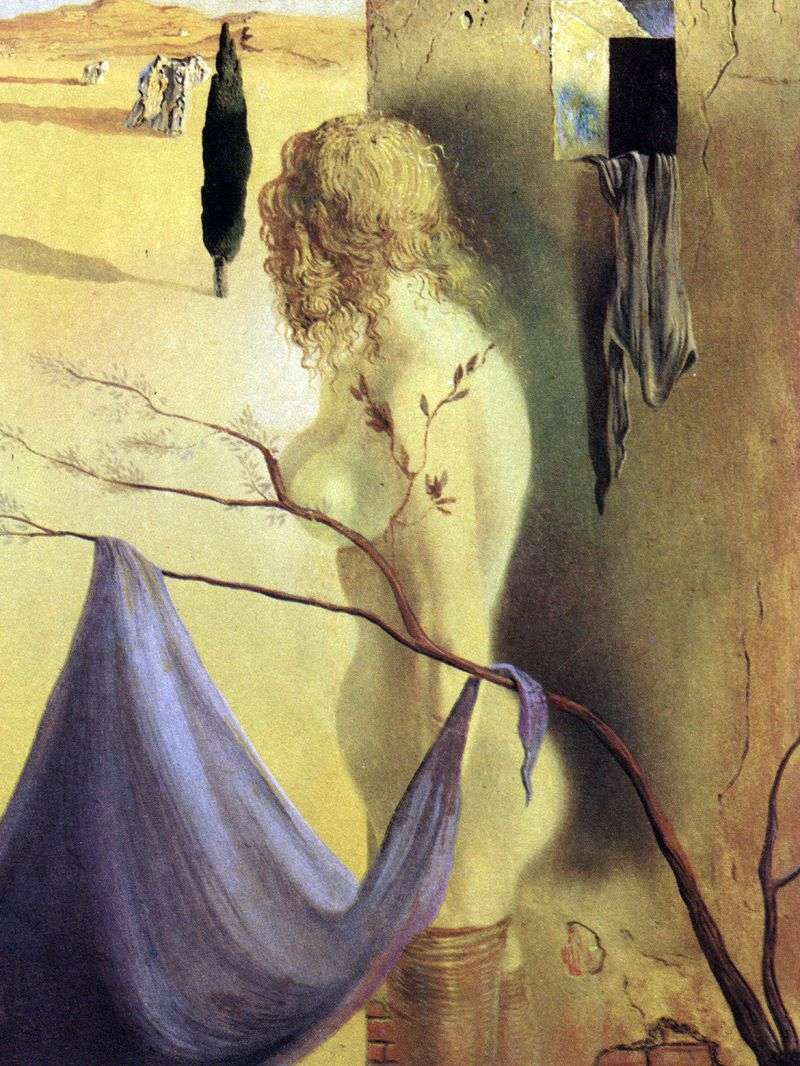 Anxious sign by Salvador Dali
Anxious sign by Salvador Dali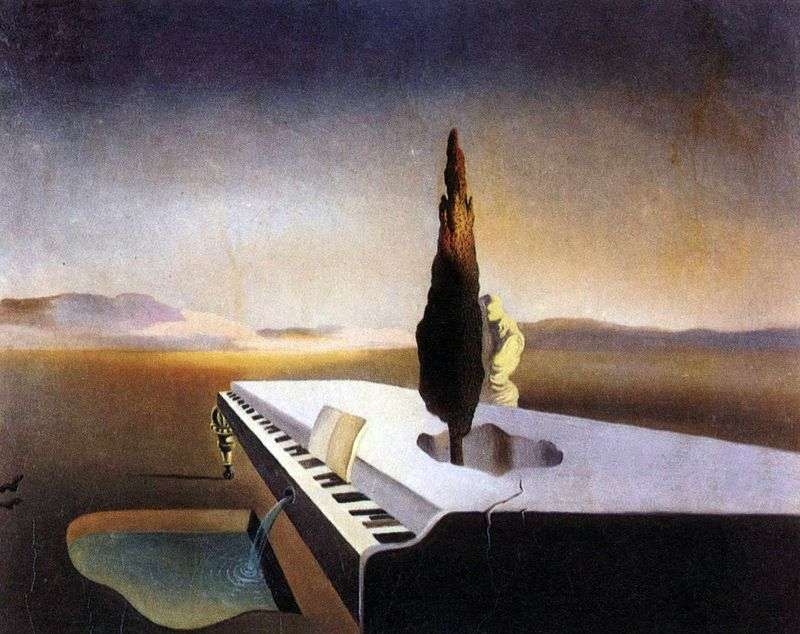 Necrophilic source, scoring from the piano on the code by Salvador Dali
Necrophilic source, scoring from the piano on the code by Salvador Dali Dali, turning his back, writes a portrait of Gala by Salvador Dali
Dali, turning his back, writes a portrait of Gala by Salvador Dali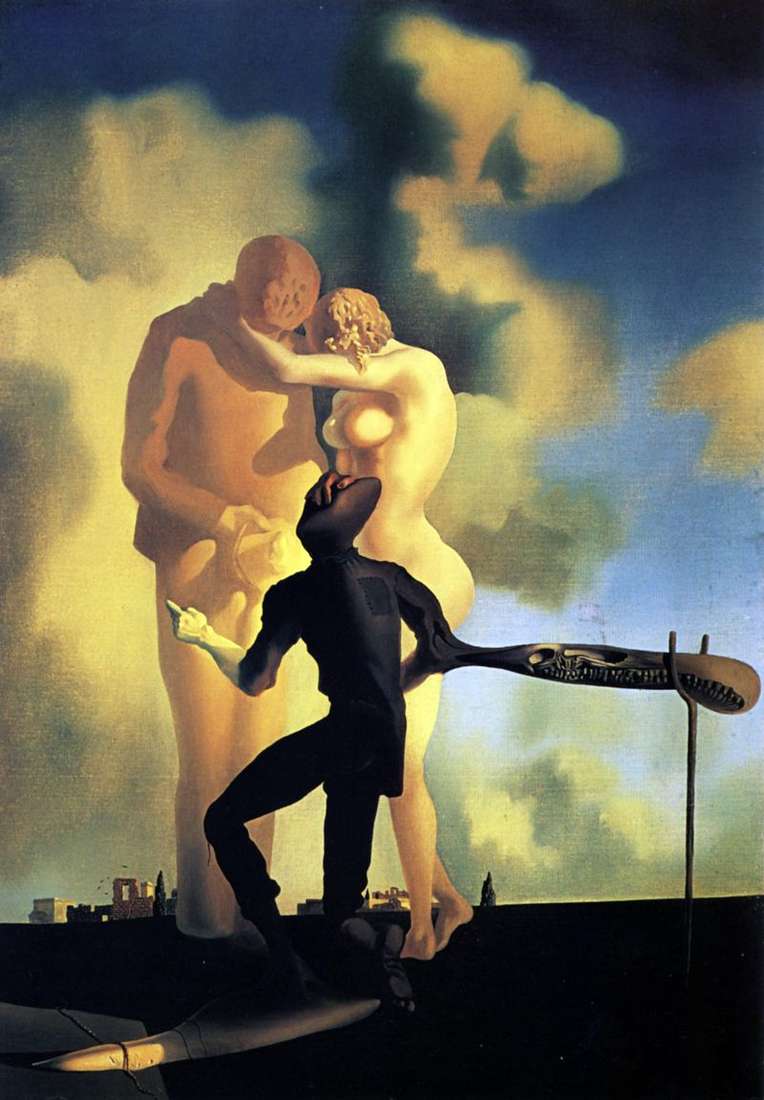 Contemplation of the harp by Salvador Dali
Contemplation of the harp by Salvador Dali Sleep laying a hand on the male back by Salvador Dali
Sleep laying a hand on the male back by Salvador Dali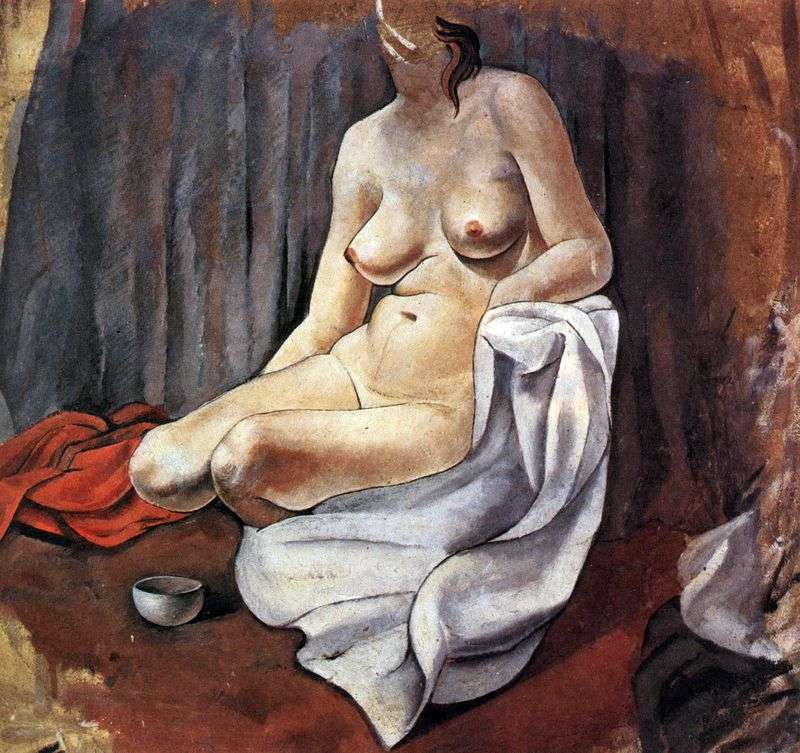 Nude by Salvador Dali
Nude by Salvador Dali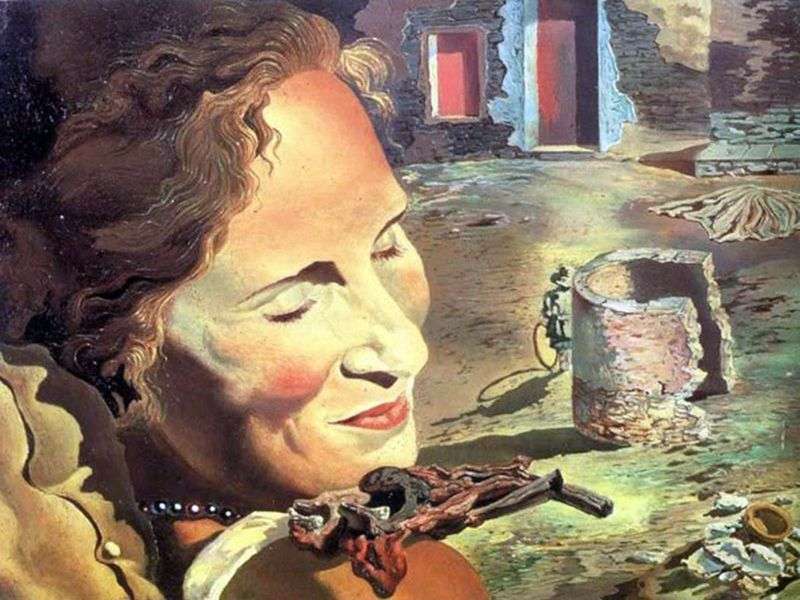 Portrait of Gala with two ribs of lamb balancing on her shoulder by Salvador Dali
Portrait of Gala with two ribs of lamb balancing on her shoulder by Salvador Dali Transitional moment by Salvador Dali
Transitional moment by Salvador Dali